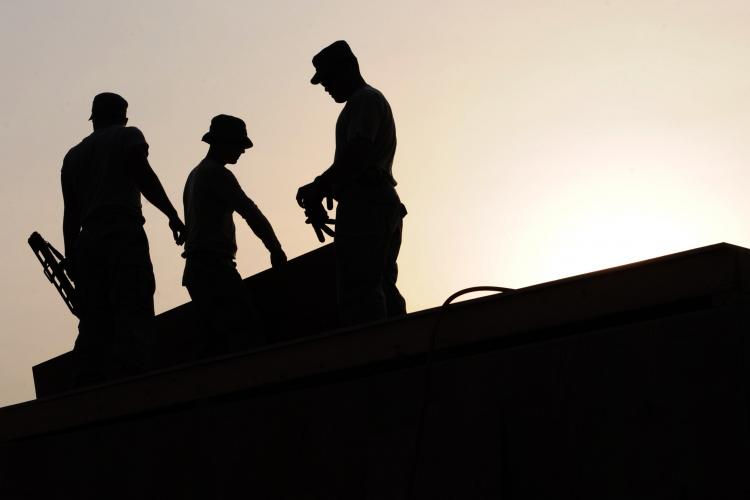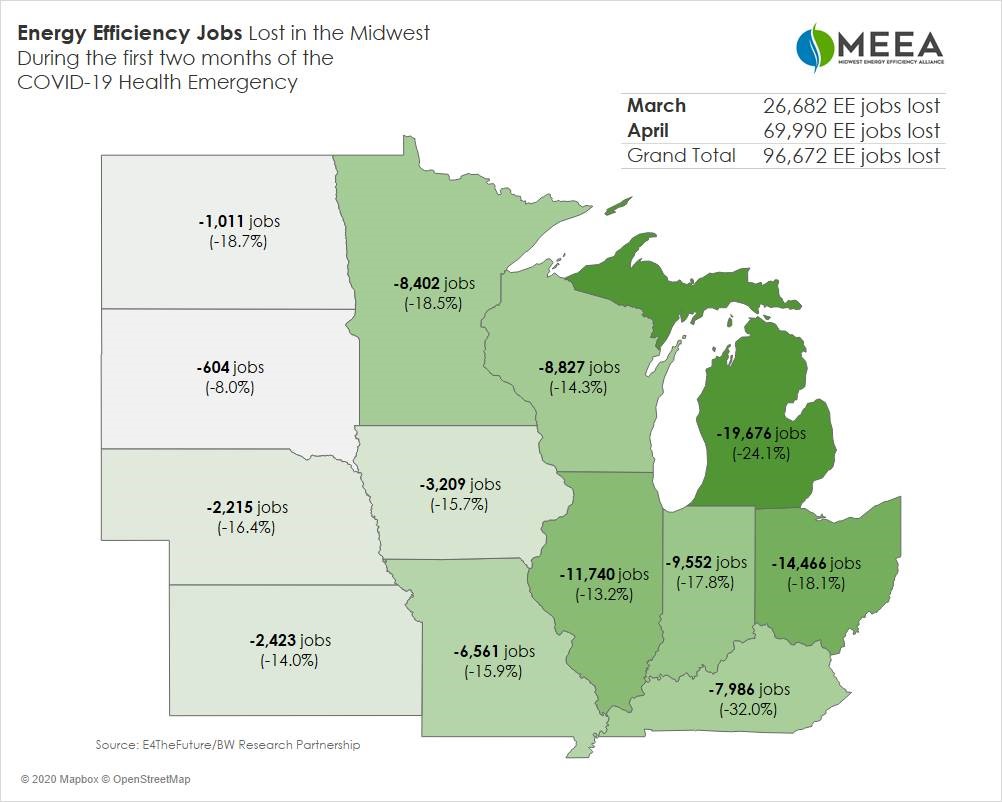
UPDATE: A new report published by E4TheFuture revealed the Midwest lost a total of 96,672 energy efficiency jobs and 138,422 clean energy jobs since the start of COVID-19.
The energy efficiency workforce has seen robust growth over the last decade, as MEEA has previously highlighted. However, recent expansion has been erased by the COVID-19 crisis. E2’s 2020 report estimates that upwards of 69,800 energy efficiency workers filed for unemployment in March, with additional claims certainly coming in April and beyond. To put this number in perspective, those March unemployment claims more than wipe out the 54,000 new jobs the EE industry added in 2019. According to E2 and BW Research Partnership, the broader clean energy sector could lose up to 500,000 jobs nationwide if actions are not taken to aid the industry.
 Stay at home orders have restricted access to buildings for EE upgrades. With less work coming in, revenue-strapped firms have been forced to reassign, furlough or lay off employees. We know it will be some time before things go back to normal, and even then, it’s unlikely that work will be able to ramp up quickly. Once stay at home orders are lifted, customers might be leery of allowing workers inside their buildings and homes and employers might not be certain that they can guarantee their workers’ safety. So what do we need to get our industry back to work? MEEA laid out some guidance in our recent COVID response webinar:
Stay at home orders have restricted access to buildings for EE upgrades. With less work coming in, revenue-strapped firms have been forced to reassign, furlough or lay off employees. We know it will be some time before things go back to normal, and even then, it’s unlikely that work will be able to ramp up quickly. Once stay at home orders are lifted, customers might be leery of allowing workers inside their buildings and homes and employers might not be certain that they can guarantee their workers’ safety. So what do we need to get our industry back to work? MEEA laid out some guidance in our recent COVID response webinar:
- Get the green light from governments to return to work
- Establish health and safety protocols for workforce
- Address liability issues
- Develop new protocols for field staff
- Retain skilled workforce
- Get ready for rapid onboarding
Regulators and policymakers can make it easier for our industry by instituting guidelines and protocols so both customers and EE contractors feel comfortable safely restarting work.
The need for energy efficiency doesn’t go away amid a crisis or during an economic downturn. We know that our economy will struggle for some time, long after social distancing ends. This is an opportunity for our industry to stress its value: ultimately, energy efficiency saves customers money. We know that EE makes homes safer and more comfortable, improves operations for businesses, helps utilities plan for future demand and benefits the environment. At the end of the day, cost-effective EE measures help customers lower utility bills and reduce their energy burden. Energy efficiency can and should be a crucial part of our nation’s economic recovery, which is only possible if we have a robust workforce.
While the EE workforce has been hit hard by the COVID-19 pandemic, the future for the industry remains bright. The energy efficiency field has experienced years of growth, far outpacing national employment growth as a whole. The demand for efficiency will return, especially with homeowners and businesses looking for opportunities to save money. This demand can only be met if the EE workforce remains strong and appropriate procedures are instituted for jobs to safely begin again. MEEA encourages governments to consider the clean energy economy in future relief bills so our industry can emerge from this crisis ready to serve all the customers who want to enjoy the benefits of energy efficiency. For our part, MEEA will continue to spread awareness of the value of EE to lawmakers and advocate on behalf of the more than 550,000 Midwestern EE workers whose contributions are critical to our economy.